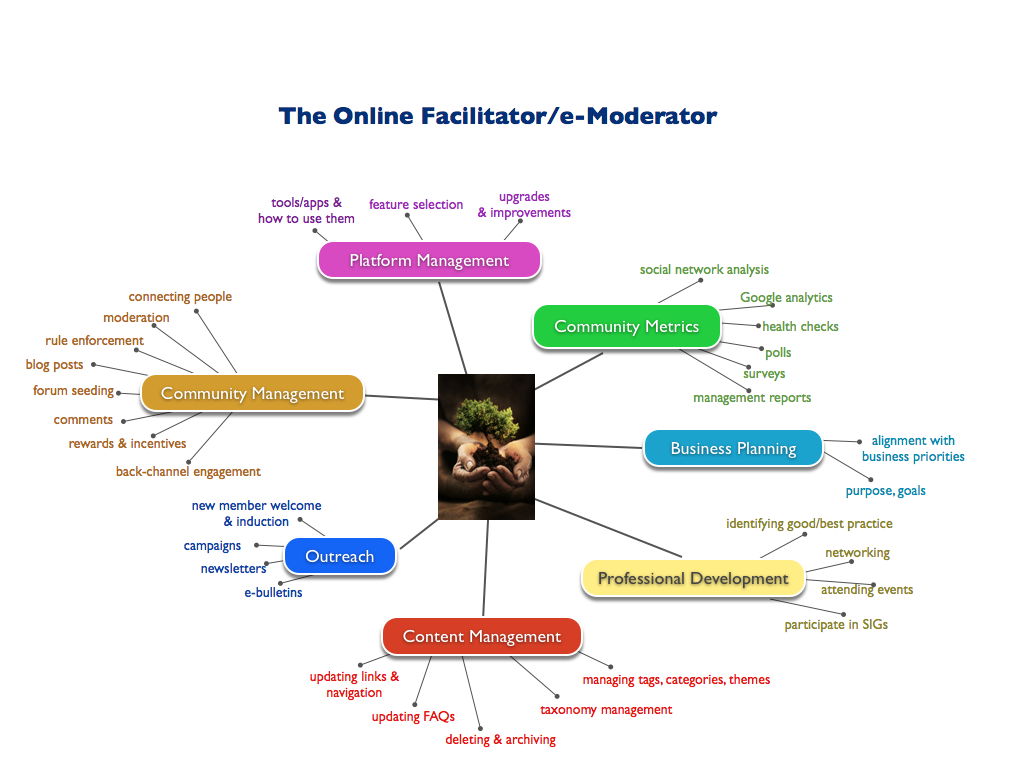Tips for Building Successful Communities of Practice
This is a refresh of an earlier blog published here in 2016

My experience of knowledge sharing in organisations stems mainly from my involvement in setting up Communities of Practice (CoPs) for UK local government. This was part of a broader Knowledge Management strategy that I was commissioned to deliver for the Improvement and Development Agency and Local Government Agency. It has since migrated to the private sector and continues to thrive as the Knowledge Hub. When I left the project there were over 160,000 users on the platform. The following paragraphs encapsulate what I learnt from this journey.
What does a successful CoP look like?
Success will of course depend on the purpose of the community. Some CoPs have been set up as networks for learning and sharing; others have a defined output, e.g. developing new practice for adult social care. It is clearly more difficult to establish success criteria for a CoP dedicated to knowledge sharing than it is for – say – a CoP that has a tangible output. Success for the former will rely on more subjective analysis than for the latter, where there will probably be more tangible evidence of an output, e.g. a policy document or case study.
However, rather than argue and debate the criteria for assessing the “success” of a CoP (or other organisational learning system), I think it is better to consider how we monitor and assess the “health” of a CoP. For this approach we should consider a CoP as an analogy to a living and breathing organism. A healthy CoP will show clear signs of life; this can be assessed using various quantitative indicators, such as:
- Number of members
- Rate of growth of the community
- Number and frequency of documents uploaded.
- Number and frequency of documents read or downloaded.
- Number and frequency of new blog posts
- Number and frequency of forum posts
- Number and frequency of comments
- Number of page views per session
- Time spent on the CoP per browser session
…etc.
Not that any one of these indicators in isolation will indicate the good health of a CoP, but taken together they can give a general perspective of how vibrant and active the community is.
Continuing with the analogy of a living, breathing organism, different CoPs will have different metabolisms, some may be highly active; others may be fairly sedate. Understanding the community ‘rhythm’ is a key aspect of knowing when any intervention is required in order to maintain this rhythm. Not all CoPs are going to be vibrant and active all of the time; there may be periods of relative inactivity as a natural part of the CoP lifecycle. But it’s important to know the difference between a CoP that is going through a regular period of inactivity and a CoP that is moribund.
A point to note: inactive CoPs may not necessarily be a cause for concern. One reason for inactivity could be that the CoP has served its purpose and its members have moved on. In which case the knowledge assets of the CoP need to be published and celebrated and the CoP either closed, or (with the agreement of the members) re-purposed to a new topic or outcome.
So, understanding the vital life-signs and metabolism of a CoP is a fundamental part of ensuring the continued good health of the CoP, and therefore more likely to achieve its goals. And the key to the continued good health of a CoP is knowing how and when to intervene when one or more of the life-signs begins to falter. Without wishing to labour my analogy of the living, breathing organism too much, it’s the equivalent of knowing when someone is not feeling too well and administering the appropriate medicine.
The Online Facilitator
Where does the CoP facilitator or e-moderator come into all of this? There is clear evidence that facilitated CoPs, i.e. that have full or part-time facilitation, are much more likely to succeed and be self-sustaining than those that rely entirely on self-organisation or community networks where there are no clearly defined roles or responsibilities.
The most successful CoPs (and I should clarify here that I’m using “success’ to mean “in good health”) are those where there is more than one facilitator and where interventions by the facilitator are frequent and predictable. This may take various forms, such as regular polls of the CoP members; regular e-bulletins or newsletters; a schedule of events (face to face or virtual); regular input to Forum posts and threads, seeding new conversations; back-channeling to make connections between members of the CoP; etc.
In other words, show me a good and effective CoP facilitator and I can show you – in all probability – a healthy and successful Community of Practice.
Attributes Of A Good Facilitator
I’ve often been asked “what makes a good community facilitator moderator be taught, but the good facilitators that I have met bring another dimension to the role, i.e. empathy with, and understanding of, human behaviours and personalities. Something that I suspect comes with experience rather than a pedagogical approach. What I do think is important is having some knowledge (not necessarily ‘expert’ status) and enthusiasm for the topic or theme of the CoP (also referred to as the ‘domain of knowledge’). This will help where interventions are necessary, and the community members are more likely to appreciate the facilitator as one of their own.
There have been various papers and blogs published about the role and responsibilities of an online CoP facilitator but maybe the following diagram captures the essence of the role.

(Reworked from an original by Dion Hinchcliffe)
Conclusion
The conclusion? Based on a significant body of evidence, coupled with personal experience, if you want to ensure the success of your Community of Interest or Practice, make sure you’ve invested in in a team of good, experienced community facilitators.







